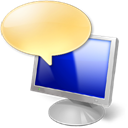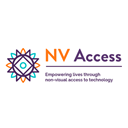The Best TalkBack Alternative: Enhancing Your Accessibility
Google's TalkBack is a widely used screen reader, often built into Android devices, designed to help blind and vision-impaired users navigate their smartphones. While TalkBack offers essential spoken functionality and is regularly updated with improvements, some users may seek out a TalkBack alternative for different features, compatibility, or simply to explore other options available in the accessibility landscape. Finding the right screen reader can significantly impact a user's experience, making it crucial to consider various solutions beyond the pre-installed.
Top TalkBack Alternatives
When searching for a robust screen reader, several excellent TalkBack alternatives stand out, each offering unique benefits to cater to diverse user needs and preferences. These options provide comprehensive screen-reading capabilities across different platforms.

JAWS
JAWS (Job Access With Speech) is a commercial screen reader software for Windows, specifically designed for computer users whose vision loss prevents them from seeing screen content. It reads aloud what's on the PC screen, making it a powerful alternative to TalkBack for desktop environments. While TalkBack focuses on mobile, JAWS provides a similar essential service for the Windows platform, offering extensive compatibility for PC accessibility.

Microsoft Narrator
Microsoft Narrator is a free screen reader included directly in Microsoft Windows, making it an immediately accessible TalkBack alternative for Windows users without the need for additional downloads or purchases. Much like TalkBack provides built-in accessibility for Android, Narrator offers a core screen-reading experience as part of the operating system. Its primary feature is being bundled with Windows, providing a straightforward solution for basic screen-reading needs on a PC.

NVDA
NVDA (NonVisual Desktop Access) is a free and open-source screen reader for Windows, offering a robust TalkBack alternative for those seeking a highly customizable and community-supported solution. It allows blind and vision-impaired people to access and interact with the Windows operating system and many third-party applications. Key highlights include its open-source nature, portable capabilities, and strong focus on general accessibility, providing a comprehensive and flexible option for desktop users.
Choosing the best TalkBack alternative ultimately depends on your specific needs, the devices you use, and your preference for features like open-source availability or integration with existing operating systems. We encourage you to explore these options to find the perfect screen reader that enhances your digital experience and meets your accessibility requirements.